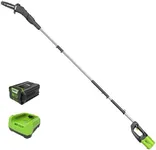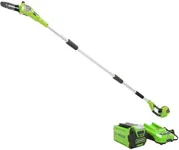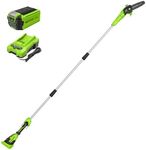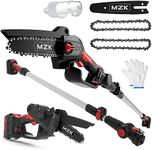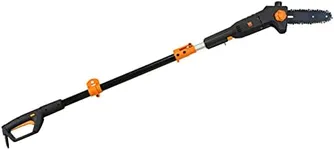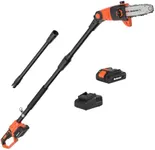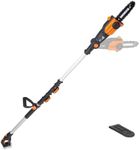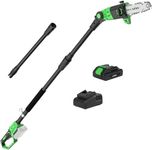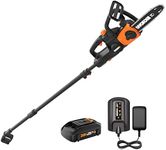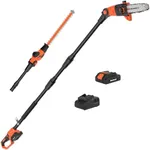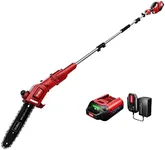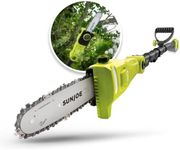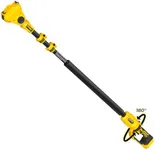Buying Guide for the Best High Power Electric Pole Saws
Choosing the right high-power electric pole saw can make a significant difference in your gardening and landscaping tasks. These tools are designed to help you trim and prune trees with ease, especially those hard-to-reach branches. To ensure you pick the best fit for your needs, it's important to understand the key specifications and how they impact the performance and usability of the pole saw. Here are the main specs to consider and how to navigate them.Power OutputPower output, measured in amps (A) for electric pole saws, determines how efficiently the saw can cut through branches. Higher power output means the saw can handle thicker and tougher branches. For light pruning, a saw with 6-8 amps may suffice. For more demanding tasks, look for models with 8-10 amps or more. Consider the types of trees and the thickness of branches you will be cutting to choose the right power level.
Bar LengthThe bar length refers to the length of the cutting blade and is measured in inches. A longer bar can cut through thicker branches in a single pass, while a shorter bar is easier to maneuver and control. For general yard work, a bar length of 8-10 inches is usually adequate. For larger trees and thicker branches, consider a bar length of 10-12 inches or more. Think about the size of the branches you typically need to cut when selecting the bar length.
Pole ReachPole reach indicates how far the pole saw can extend, allowing you to trim higher branches without a ladder. This is usually measured in feet. A reach of 8-10 feet is suitable for most residential tasks. For taller trees or professional use, you might need a pole saw with a reach of 10-15 feet. Assess the height of the trees in your yard to determine the appropriate pole reach.
WeightThe weight of the pole saw affects how easy it is to handle and use for extended periods. Lighter models (around 7-10 pounds) are easier to maneuver and less tiring to use, making them ideal for occasional use and smaller tasks. Heavier models (10-15 pounds or more) may offer more power and durability but can be more challenging to handle. Consider your physical strength and the duration of your typical tasks when choosing the weight.
AdjustabilityAdjustability refers to the ability to change the length of the pole and the angle of the cutting head. This feature enhances versatility and allows you to tackle branches at different heights and angles. Look for models with telescoping poles and adjustable heads if you need to work on a variety of trees and branches. If your tasks are more uniform, a fixed-length pole may be sufficient.
Safety FeaturesSafety features such as automatic chain brakes, low-kickback chains, and ergonomic handles are crucial for preventing accidents and ensuring comfortable use. Automatic chain brakes stop the chain quickly in case of kickback, while low-kickback chains reduce the risk of sudden movements. Ergonomic handles provide a better grip and reduce strain. Prioritize models with these safety features, especially if you are new to using pole saws or will be working for extended periods.
Ease of MaintenanceEase of maintenance includes features like automatic oilers, tool-less chain tensioning, and easy access to the air filter and spark plug. These features simplify the upkeep of the pole saw, ensuring it remains in good working condition. Automatic oilers keep the chain lubricated, while tool-less chain tensioning allows for quick adjustments. Consider how much time and effort you are willing to invest in maintenance when selecting a model.
